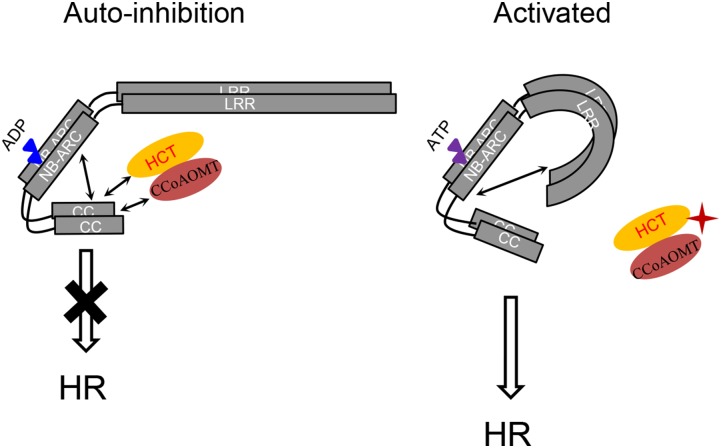Figure 8.
Model for the suppression and activation of Rp1 proteins, adapted from our previous study (Wang et al., 2015c). Rp1 proteins form homo- and heteromers. The inhibited state of Rp1 proteins (left) is maintained through autoinhibitory intramolecular interaction between the CC and NB-ARC domains and also through interactions between CCoAOMT/HCT complex and the CC domain. In the activated state (right), pathogen effectors modify CCoAOMT/HCT complex, disrupting the interaction between Rp1 proteins and CCoAOMT/HCT. This in turn disrupts the autoinhibitory intramolecular interactions; the interaction between the LRR and NB-ARC domains is strengthened and the CC/NB-ARC interaction is weakened, leading to activation and HR. Blue and pink triangles indicate ADP and ATP, respectively. Arrows indicate intra- and intermolecular interactions. The putative pathogen effector is labeled in red star.

